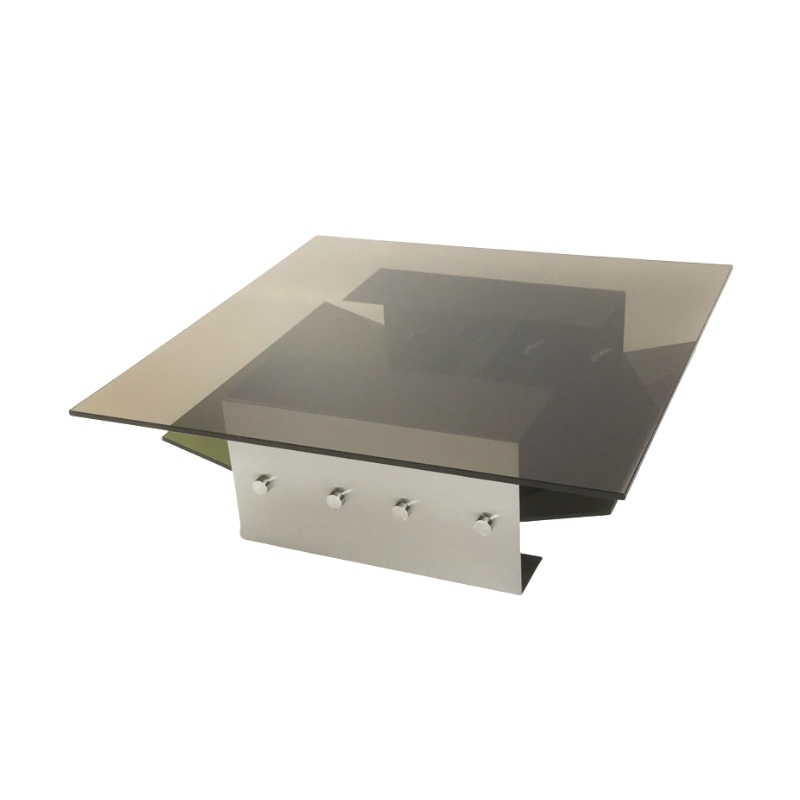Hello DC...but..
I havent got a clue what a Loblolly House is?, and also havent got another clue what Grey water means?. Are they transatlantic things i wonder?.I admit that the first sounds very nice though and rather like a dolls house.Im currently staying with friends,none of whom know either!, we have a lot to learn here.Please explain for us.
Are you talking about this?
Are you talking about this?
www.treehugger.com/files/2006/03/what_makes_a_bu_4.php - 80k -
and this?:
http://www.kierantimberlake.com/featured_projects/loblolly_1.html - 12k -
Yes, that's it, but the link didn't work for me...
so here's another one to try...
http://www.kierantimberlake.com/pl_sustainability/loblolly_1.html
I'm sure the Loblolly house won't be everyone's cup of tea...Pt.1
to look at, though I love it, but this is a potentially important alternative to build-it-all onsite and build-it-all-at-the-factory.
The upside if you are the builder/manufacturer is that you are turning a house into the bricks and mortar equivalent of a car, where you are creating a downstream parts and repair business that takes some of the lumpiness out of your cashcycle and raises yield a little. The downside if you are a builder/manufacturer is that you are doing the same. Lots of future dollars to be made in downstream parts and repair business, but lots of headaches dealing with the public and matching inventory carrying costs with demand I would imagine. Also, something most nonfinance persons just don't grasp about downstream business is this: you have to charge ALOT for the downstream parts and repair to make up for the discounting effect of present value and compound interest. Houses are a long lived asset. Any dollars collected beyond ten years effectively discount to zero in typical financial analyses that a banker or a stock market analyst will use to value your business model and loan money on. I'm not saying this is right or wrong, just how it is. Frankly, money realized beyond ten years out is pretty worthless in discounted present dollars unless you can get an analyst to increase average income in the present (to reflect its receipt in the out years of the activity) and then capitalize it in the present, but this is something prudent bankers and saavy investors don't do.
The upside for a homebuyer is that you get to spend less time in the high risk (to your pocket book) building phase of new home construction (that's where they nickel and dime you to death). I would suspect it could all be rather cheaper to the consumer, IF the builder/manufacturer passes a decent share of the construction cost savings along...not a sure thing until there is some competition among builder/manufacturers.
The downside is you are married to this manufacturer builder the way you are married to your car manufacturer or software maker. It will probably be quite awhile before local craftsmen develop the skills necessary to intervene in repair and replacement, and, of course, the builder/manufacturer can do the old car company trick of voiding the warranty if you use other people's parts, etc.
Loblolly Pt. 2
I know this all sounds like throwing cold water on a fire I described originally as hot. And I know that as a general rule many designers are probably not prone to interest in business model analysis. But I took the time to give it a quick once over (and my skills in this regard have grown rather rusty since I practiced them for real quite a few years back) in order to sensitize you to some of the structural financial hurdles to realizing this sort of change in housing production.
In short, its very tough to make any positive global change in the process of production of housing for the same reason it is tough to make a change in the operation of any ecosystem. The housing process is a complex ecology. Lots of firms and individuals adapted over time to a context with a wide variety of rules of thumb cost-benefit and formal regulatory constraints. Complex contexts plus firms and consumers with differing net benefit agendas often lead to resistance to change, unless a good product is designed to fit more than just the onsite linkages, but all the offsite linkages as well.
Sorry for the lecture, but I've just seen too many good things in real estate never see the light of day because the architect/designers and the builder/manufacturers and the government regulators didn't invest the time, money and creativity to solve ALL the problems to keep good products from being stillborn.
I see this Loblolly House as another in a long line of promising attempts to reduce the long standing problem of long construction time and inefficient wedding of internal building infrastructure to building structure. Most of these global attempts (rethinking the way the WHOLE house is built) have obvious shortcomings and get thrown on the ash heap of ideas, as they should be. In turn, the real estate process muddles onward with tons of localized, barely perceptible solutions by the traditional constellation of players in the process. But once in awhile, something like this Loblolly house shows up and at least points the way to something greater than just more tiny incremental steps.
Loblolly Pt. 3
Intuitively (I'm not getting paid to think systematically here), I suspect this Loblolly approach might find more ready acceptance in R&D/light industrial developments, with the emphasis on R&D structures (what in California are called R&D parks). R&D has growing internal building infrastucture complexity coupled with seemingly endless new tech firm start ups and rapid growth among the survivors. The R&D park developers are pros at throwing up concrete tilt-ups on a slab in a hurry, but three weeks would be recognized as a significant time savings. And internal building infrastructure still slows'em down and requires more onsight building skills than they'd like to have to do pay for. And modular construction with flexibility downstream that could be varied in a hurry and cost effectively to accomodate techno evolution and firm evolution in an R&D park could be very attractive to builder/manufacturers and tech firms. Fixed buildings segmented by foot prints size are the current attempt to accomodate firm growth (and death). But as George Patton said of fixed defense infrastructures like the Maginot Line, such inflexibility is a testment to the stupidity of man. Modular flexibility is not only good for office cubicles and office walls, it would be good for internal building infrastructure and building footprints, too.
Imagine a city where firms and developers kept redeveloping the same R&D industrial buildings rather than going out to the latest edge of town and putting up yet another bunch of fixed concrete tilt-ups just because no one wanted to deal with the hassles of retrofitting the existing Maginot Line of the existing R&D parks. It would be good for everyone...except maybe the land bankers, and I actually believe it would be better for them, too. By creating flexible footprint and flexible internal building infrastructure development on sites, the land they do develop could be valued higher, if...
We could just get some valuation institutions, tax laws and financial rules of thumb modifiied to reflect the efficiencies of shorter development times and lower construction costs, longer land use between successions, less obsolescence, lower vacancy rates, more downstream repair and remodeling revenues, etc. But then I'm back where I began in my assessment of the Loblolly house in the housing process. I'm asking for institutional change in an R&D building process with alot of complexity and inertia. See what I mean about the trickiness of global interventions in complex systems? Still, worth a at least a short look by the big players, I think.
Vivienne, good to hear from you...
The Loblolly house is on the east coast and by an architect named Kieran, I believe. If you click on the link I provided in the thread above you can see it and if you check the Wired 1.07 you can read about it.
Regarding grey water, its just what we Yanks call the stuff coming out of our washing machines, i.e., water with detergents and bleach. Most of us haven't adopted the more efficient Euro machines yet, so we have more grey water. Instead of running it into the sewer, or the septic tank in a yard, this guy just runs it into a little 30 gallon plastic tank and then gravity feeds it out to his flower beds and fruit orchard. Probably folks in England have been doing this for ever, but the art was somehow lost here in America for awhile. The Wired story adds that there are certain kinds of detergents that are even more nutricious to flowers and fruit trees. Note: the story says NOT to use grey water in your garden.
Hope your Christmas and New Years holidays have made the register ring and that you got the gifts you asked for from Santa Claus.
Yes..
I now understand the thinking / economics of this type of building, one of the companies in the UK that do this type for residential use is "Urban Splash",they are using prefab. units in the latest few of their projects but although they look very hip i cant see myself in one!,i like a place to have character,Miss Haversham/Great Expectations etc.. Its also nice to be back in circulation after a few weeks in a private hotel,(the sort of hotel where naughty boozed up people go to have their liver emptied ,presumably so they can get more in it!! ha.)
I wonder...
At what point does an interest become an obsession and an obsession become so all consuming that it becomes something akin to an addiction?. It must be different things to different people i suppose. Also, yes we do have that "recycled" water thing here in UK DC but i havent got around to partaking in it myself yet!. YUK to that baby!!!.
Thank you...
Thanks Geo.H for the info, I must learn to google first before asking questions! but then i much prefer to ask questions!. I have however googled "Burgoo" and it says its a Kentuckian stew (generically speaking), so that will come in really handy for me the next time im roaming in Kentucky and feel hungry! ,thanks.
.
I assume the Loblolly House is elevated against potential coastal flooding, temporary or otherwise ? The wicky-wacky piloti-posts are a sort of signature of a post-post modernism (pun not intended); I wonder which design was first to use them ? A French Koolhaas-house of a couple of years back surely wasn't the first. . .
If you need any help, please contact us at – info@designaddict.com









